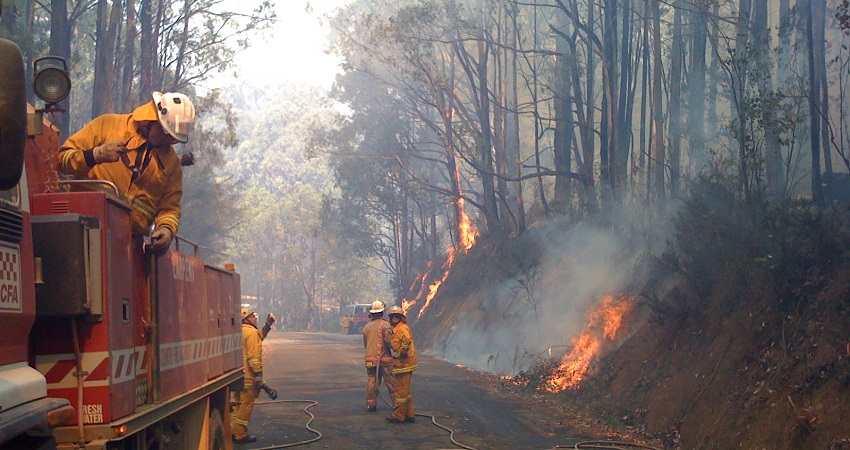As Australia welcomes the spring season, it is bracing itself for a potentially catastrophic threat – severe bushfires. New South Wales (NSW), the country’s most populous state, is facing the ominous combination of record spring temperatures and high winds that have fanned the flames of over 60 blazes. This dire situation has raised alarm bells among authorities and residents alike.
According to the Australia Bureau of Meteorology (BOM), several cities along the east coast have already experienced record spring temperatures. Sydney, the capital of NSW, is poised to record its hottest September day ever, with BOM forecasting a scorching high of 35 degrees Celsius (95 degrees Fahrenheit).
Senior BOM meteorologist Miriam Bradbury, in a video posted on X (formerly known as Twitter), highlighted the severity of the situation. She mentioned that NSW is currently grappling with “record September heat, dangerous fire weather conditions, and gusty winds.”
As of Wednesday afternoon, a staggering 65 fires were actively burning across NSW, and alarmingly, nearly a third of these fires remained uncontained, as reported by the state’s Rural Fire Service (NSWRFS) on Facebook.
NSWRFS commissioner Rob Rogers sounded the alarm, stating, “It’s the worst risk we’ve faced since the Black Summer fires of 2019.” This grim reference harks back to the devastating 2019-2020 bushfire season, which claimed numerous lives and an estimated billion animals while scorching over 10 million hectares of land.
In response to the escalating threat, the NSWRFS declared a total fire ban, encompassing activities such as barbecues, campfires, and welding, not only in Sydney but also in the surrounding areas.
This worrisome situation in NSW is not isolated; bushfires are also raging in other parts of Australia, including Queensland, Tasmania, and central Australia near Tennant Creek. The fire near Tennant Creek had consumed more than a million hectares of land in the Northern Territory by Monday, according to authorities.
The Australasian Fire Authorities Council (AFAC), the national council for fire and emergency services in Australia and New Zealand, had already predicted an elevated risk of bushfires across the country, particularly in the Northern Territory, Queensland, and New South Wales. This increased risk is attributed, in large part, to the effects of climate change.
AFAC CEO Rob Webb emphasized the widespread impact of climate on bushfire risks, stating, “The climate influences driving increased risk of bushfire this season are widespread. Almost the entire country can expect drier and warmer conditions than normal this spring, so it is important for Australians to be alert to local risks of bushfire over the coming months, regardless of their location.”
These concerning trends are exacerbated by recent weather patterns. Australia experienced its 10th driest August, and BOM senior climatologist Zhi-Weng Chua, in a Facebook video, declared it the “warmest winter on record.” With these factors in mind, Australia appears to be headed for an exceptionally hot and dangerous period.
Adding to the concerns, BOM announced that an El Niño weather event has begun. Typically, El Niño leads to warmer, drier springs and summers, heightening the risk of bushfires. Karl Braganza, BOM manager of climate monitoring, emphasized, “This summer will be hotter than average and certainly hotter than the last three years,” as reported by CNN regional affiliate 9News.
While there is some relief in the BOM’s forecast of cooler temperatures in NSW in the coming days, the threat of heatwaves and fire danger is expected to shift northward and westward by the week’s end.
In conclusion, Australia is on high alert as it faces the twin challenges of scorching temperatures and the looming threat of bushfires. The memories of the devastating Black Summer fires of 2019 continue to haunt the nation, and authorities are taking every possible measure to mitigate the risk and protect communities. As the country enters a potentially perilous season, vigilance, preparedness, and cooperation are paramount.
